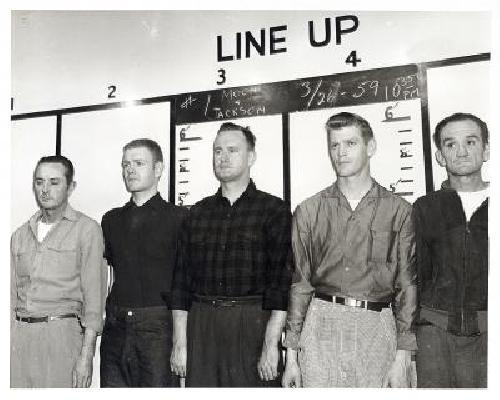When it comes to accurately identifying a criminal suspect, it makes a difference how sure an eyewitness is, finds a study led by a memory expert at the University of California, San Diego. The American justice system should take note of eyewitness confidence, but only at the time of the initial identification and not at a later date in court. Working with victims and bystanders of actual robberies, the study also finds in favor of the traditional lineup procedure that presents suspects at the same time as known innocents, instead of individually.
The study, published in the Proceedings of the National Academy of Sciences, analyzes data from a field experiment conducted by the Houston Police Department in 2013. It includes 348 photo lineups in which police investigators who were blind to the identity of the suspect presented eyewitnesses with photos of the suspect along with five innocent 'filler' subjects, either simultaneously or sequentially. The eyewitnesses were all strangers to the suspect. The investigators also recorded eyewitness confidence at the time of identification, using a three-point scale of high, medium or low confidence. The coauthors believe this is the first field experiment to include initial confidence ratings.
The study's senior author is John Wixted, professor of psychology in the UC San Diego Division of Social Sciences and an expert in memory. The coauthors are Laura Mickes, an alumna of UC San Diego now at Royal Holloway, University of London, John C. Dunn of the University of Adelaide in Australia, Steven E. Clark of UC Riverside, and William Wells of Sam Houston State University in Texas.

Wixted and colleagues find that traditional simultaneous lineups are, if anything, superior to sequential lineups and that witness confidence is a strong indicator of the accuracy of identifications. If -- at the time of police photo lineup -- a witness is confident about a memory, it is likely to be correct, but if they are not confident about a memory, it is much more likely to be incorrect.
The study's findings contradict earlier lab studies that used mock witnesses to simulated crimes. These studies questioned the connection between eyewitness confidence and accuracy, and urged police departments to switch to a sequential lineup procedure, which up to 30 percent of the nation's police departments have now done. Recent lab-based experiments, as well as field studies such as the present one, challenge those earlier findings.
It is well documented that memory is malleable and that witnesses are suggestible, Wixted explained. By the time eyewitnesses testify in court, potentially months or years after a crime has taken place, the confidence they expressed in their initial identification of a suspect can become unintentionally inflated. Often, jurors only hear that dangerously inflated expression of confidence. In response, recent changes in jury instructions urge jurors to disregard eyewitness confidence. But they go too far, Wixted said.
"A blanket indictment of the reliability of eyewitness expressions of confidence is wrong," Wixted said. "It's a huge mistake our legal system is making. At the time that they're first making an ID, eyewitnesses can give us reliable information about their accuracy."
The study estimates the accuracy of suspect identification using two distinct models of recognition memory. Accuracy could not be directly computed, since it is not known which identified suspects are guilty and which are innocent. Though based on different theoretical assumptions, the two models point to similar results. Both suggest that high-confidence identification is highly reliable and low-confidence much less so.
Getting this right is important, Wixted said. According to the Innocence Project, as the coauthors point out in their paper, eyewitness misidentification is the single greatest cause of wrongful convictions in the United States, having played a role in more than 70 percent of the 330 wrongful convictions that have been overturned by DNA evidence since 1989.
"These facts are widely understood to mean that eyewitness memory is unreliable," Wixted said, "but most of the mistaken IDs were initially made with low confidence, not high confidence. In other words, the witnesses appropriately signaled that their identifications were error-prone."
The results of this study are compatible with the policy recommendations recently made by a National Academy of Sciences report, which the coauthors of the study explicitly support. These include an emphasis on the importance of fair lineups, where all the people presented - the suspect and the filler subjects - fit the description of the suspect, so no one stands out; double-blind administration of lineups, where both the person administering the lineup and the witness do not know who the suspect is; neutral instructions to eyewitnesses; and, critically, the recording of eyewitness confidence at the time they're making an identification.
"Ignoring low confidence in the beginning is a grave error. The witness is telling you that there's a good chance they're making a mistake." Wixted said. "To protect the innocent, it is important to realize that an initial low-confidence ID is untrustworthy. On the other hand, when lineups are fair and administered neutrally, high confidence at the start can also be quite telling. Judges and juries should pay attention to both. Doing otherwise is a disservice to justice generally and to protection of innocents especially."




Comments